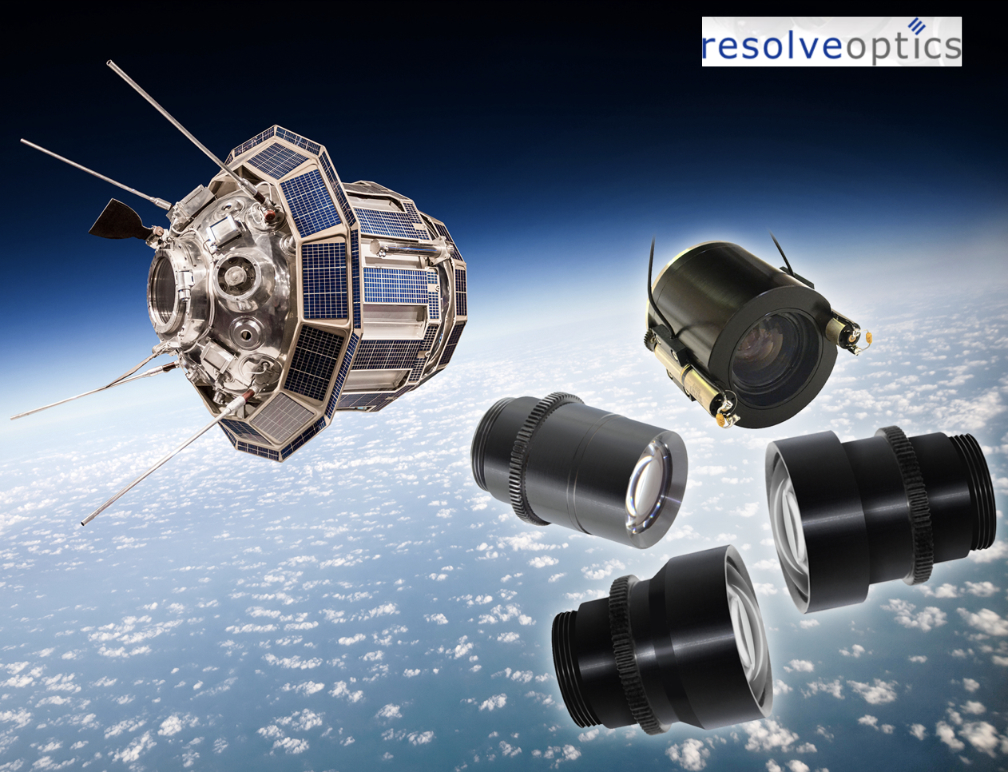
Resolve Optics is a leading supplier of miniature space-ready optics that are at the heart of smallsats that are being deployed to address a growing range of applications that include remote sensing, EO, data communications, scientific analysis, and surveillance.
For a lens or optical system to be considered space-ready, it must meet some strict requirements. The key environmental considerations when designing lenses for use in satellites includes how they react to the vibration and shock of launch, extremes of temperature, high vacuum and cosmic radiation encountered in space.
Mark Pontin, Managing Director of Resolve Optics, said, “As satellites have decreased in size there is the necessity for the optics that lie at the heart of these imaging platforms to also reduce in size and weight. This is not always a straightforward task. If you are developing a camera system for a micro- or nanosatellite-based space mission, we recommend incorporating a compact sensor and then it will be possible for us to keep the lens design compact as well. Being able to keep the size of the lens compact also helps them withstand vibration and shock during launch into space as the mass is small.”
Mark continued, “To ensure your micro- or nanosatellite optics are sufficiently robust, all elements in our space-ready optics are secured and unable to break loose when subjected to the rigors of launch and other environmental factors. All our satellite lenses and optical systems are athermalized to ensure they maintain focus throughout the wide operating temperature range typically experienced in space. The impact of cosmic radiation on your lens or optical system is a major consideration when designing for use in space. Unfortunately, standard optical glass types turn brown or grey when exposed to cosmic radiation. As a result, the light transmission of the lens will degrade markedly in just days or weeks. For longer term space missions, we use cerium doped glass elements that prolong the life of the satellite lens or optical system to years.”
For further information on miniature optics optimized for smallsat applications, visit this direct link to read case studies about space-ready optics.
Over the last 20 years, Resolve Optics has built a reputation for designing and supplying high performance space ready optical systems for monitoring the outside of spacecraft looking for any signs of damage caused by space debris or micro meteorites. For inspection tasks, where the optical system is required to view a specific area to aid operation. As part of a vision systems used to guide and dock payload craft visiting platforms such as used on the International Space Station. And, to enhance remote sensing from satellites where powerful, high-resolution lenses enable the Earth to be viewed from space providing valuable data on the Earth to be viewed from space providing valuable weather patterns and the impact of climate change.
